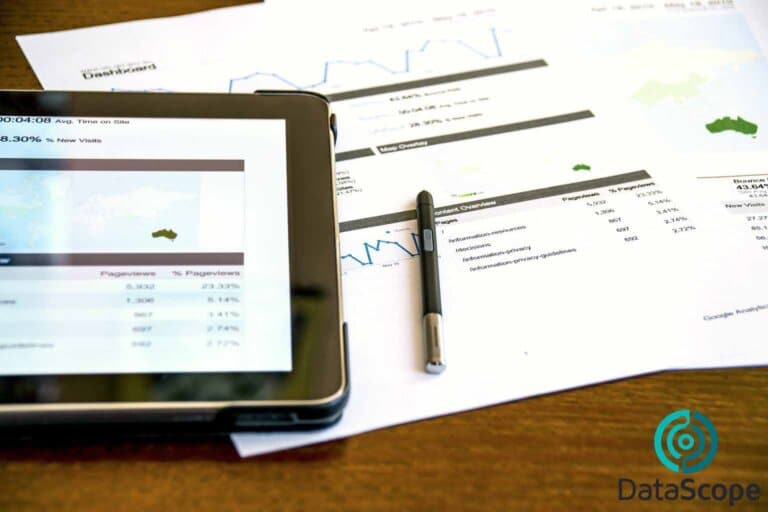The growing contribution of advances such as Artificial Intelligence, robotics, the Internet of Things and 5G connectivity, allows this strategic sector to take a quantum leap towards a dimension of greater productivity, carbon neutrality and efficient use of resources. This translates into a better capacity to produce healthier, safer, innocuous and sustainable food.
The current evolutionary scenario, characterized by the progressive digitization of processes and the use of advanced technologies, translates into an increasingly accelerated development of all productive and industrial sectors.
Agribusiness is no stranger to this phenomenon. Furthermore, each of its actors is in a stage of gradual implementation of new and sophisticated tools which are part of the transformation promoted by the “Digital Revolution” of the 21st Century.
However, the pressure to produce a greater quantity of safe and innocuous food (in order to serve a world population which is growing exponentially), demands an even more intense transformational effort. For this reason, experts and analysts agree that agribusiness today is in a middle of a “supra revolution of its own” defined as “Agriculture 5.0 Age”.
Technical characteristics
This new stage goes beyond the simple modernization of processes. It implies an intrinsic connection between all the ends of the productive network, which is articulated precisely through new digital communication channels.
In this context, the use of multiple tools developed for this new eco-sustainable precision agriculture acquires great importance, which will profoundly mark the future of food production. Among these stand out:
- State-of-the-art robotics for machinery control and monitoring.
- Intensive use of data collection and analysis, to optimize production.
- Implementation of AI for the most efficient use of land and natural resources.
Advantages and benefits of the agribusiness revolution 5.0
The advent of this new age translates into concrete advantages to solve some of the most serious problems of agribusiness. Specifically, the experts emphasize that this could optimize production and reduce negative impacts on the environment.
For example, the widespread use of autonomous and robotic technology in land prospecting, irrigation, harvesting and post-harvesting processes provides Agriculture 5.0 with a key opportunity to solve the serious shortage of labor registered in the sector in recent years.
An international example that confirms the validity of this analysis is the progressive appearance of the so-called “ghost farms”. Production units controlled exclusively by robots and intelligent machines, which guarantee more safety and speed in the processes.
Their high levels of efficiency and lower environmental impact have allowed them to gain more presence in developed economies, especially to optimize production in periods of climatic stress.
Hyperconnected agriculture
Another of the transcendental pillars of this 5.0 agriculture-industrial revolution is connectivity, because the intensive use of automated technology requires solid digital communication networks.
Despite the fact in certain remote rural areas full connectivity is still a complex challenge, the progressive massification of 4G networks has made it possible to overcome this contingency step by step. Process that is estimated to be much more efficient in the short term, thanks to the launch of multiple new 5G networks.
This will allow the production of farms or properties to be managed remotely very soon, by means of a telephone or mobile device that allows, for example, to control the work of robotic irrigation, harvesting and pest monitoring equipment, among other possibilities.
In fact, 5G connectivity will also allow the farmer or farm manager to control, through an app on their mobile device, actions such as buying fertilizer or supplies, and even selling their own final production to different members of the food chain.
Pending challenges
One of the great challenges for those who today work or manage an agricultural property is to join this technological revolution as soon as possible, which in the short term will be essential to ensure competitiveness and sustainability.
A challenge that also requires easy-to-use technologies, in order to break down penetration barriers more efficiently. In this sense, the experts agree that the solutions must be user-friendly (for example, plug and play type) and at reasonable costs.
Likewise, specialized solutions will be required at the management level, to guarantee better monitoring of the different automated systems that are implemented in the farms of the future.
An excellent option are specialized applications based on electronic checklists, which allow proper control of the operation and maintenance of the different automated and robotic tools that operate on a farm. This would ensure permanent quality of the processes, a key point that in turn is vital for the success and safety of the food chain.
Specific advances applied to agribusiness
This growing need to optimize agri-food production, to make it safer, more innocuous and sustainable, means that today agricultural technology providers are developing new generations of robotic systems specifically designed to work in the field. With its help, producers will have greater support in very strategic tasks such as irrigation, fertilization, application of agrichemicals, weed control, harvesting and product packaging, among other applications.
Effort that, as a whole, pushes with greater force the evolution of agricultural systems to the new concept of Agriculture 5.0.
For example, the Swiss company Stäubli, specialized in mechatronics, offers today a range of four- and six-axis high robots, designed for use in all types of primary agriculture-industrial tasks that involve direct contact with unpackaged food, even in sensitive areas.
This technology is already used daily in a wide range of handling processes, including, for example, primary packaging in the meat, sausage, poultry and dairy industries; as well as in specialized segments such as bakery, confectionery and fruit and vegetable production.
Another outstanding example of food robotics corresponds to the Racer-5 SE Coma model, designed and manufactured by the Italian company Comau (Consorzio Macchine Utensili) to operate in complex and sensitive environments.
Its modularity allows it to be used on flat or inclined surfaces and even mounted on a wall or ceiling. This translates into the easy automation of various operations, including food packaging, which reduces significant overall operating costs.
This model is also suitable for the food and beverage industry, since its white surface is approved for direct contact with all types of food; and its components are protected from the action of various aggressive cleaning agents, such as peroxide, chlorine and alcohol.
The German company Escha has, in turn, a wide range of smart connectors designed to promote the concept of “hygienic design”. In other words, its use allows us to optimize production lines, minimizing the risk of contamination, because the system doesn’t use potentially toxic components. These connectivity solutions are designed for the three typical areas of food industry: contact, spraying and packaging.
In the same way, there is also a wide range of autonomous equipment and drones, which today allow us to automate the tasks of prospecting and fumigation of land (among other key tasks). This makes it possible to relieve human operators and optimize a significant number of resources, especially aircraft fuel consumption, with the consequent positive impact on the environment.
Factors that, as a whole, trace an optimistic path full of new opportunities for agribusiness to be more efficient, safe, harmless and sustainable in the short term.
Create an account DataScope and start now!
DataScope is the ideal tool to eliminate paper use, save time, and efficiently collect data from the field. It allows companies to streamline, organize and evaluate field work thanks to its online forms, which provide indicators in real time, 100% adaptable to any area.
With DataScope, your team can answer custom mobile forms from their phones or tablets, online or offline, through the app.






